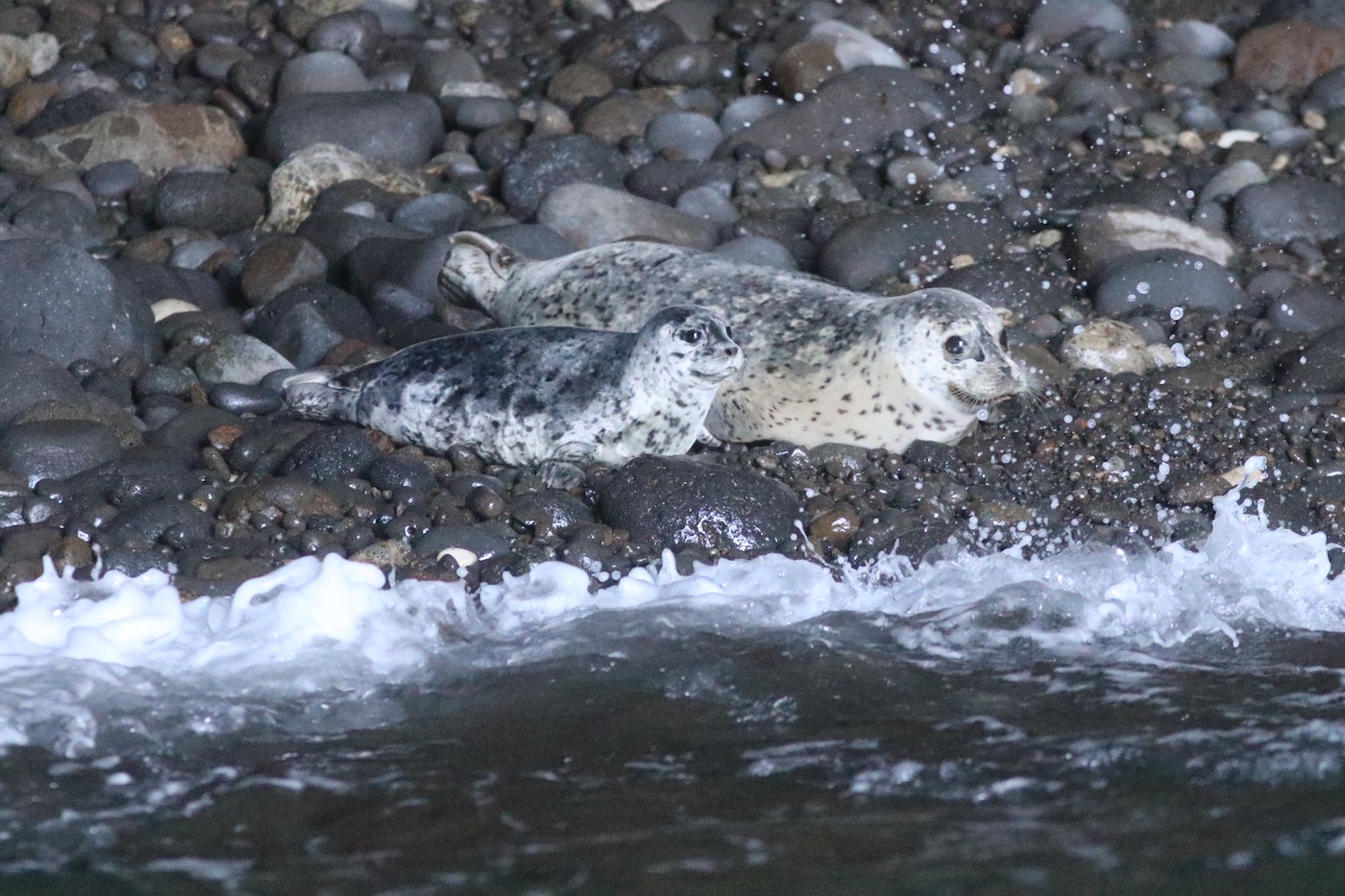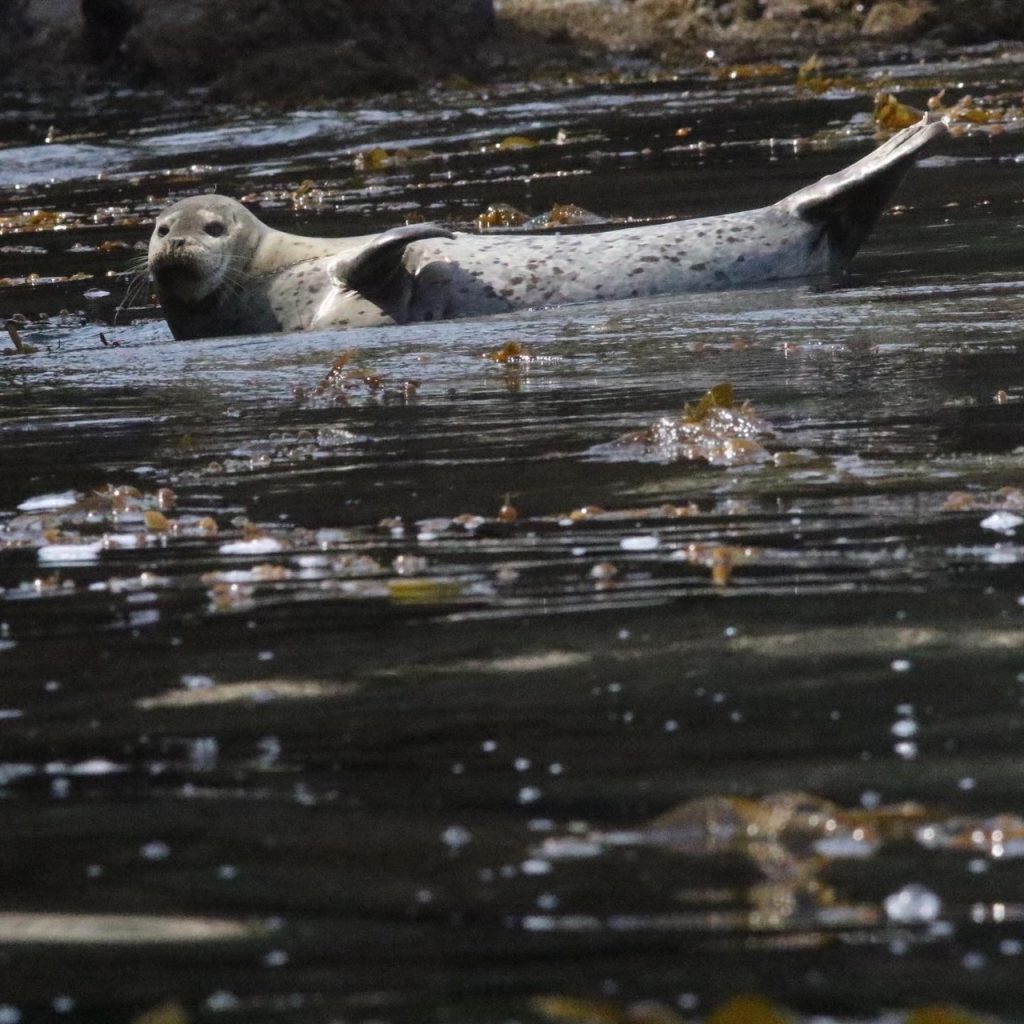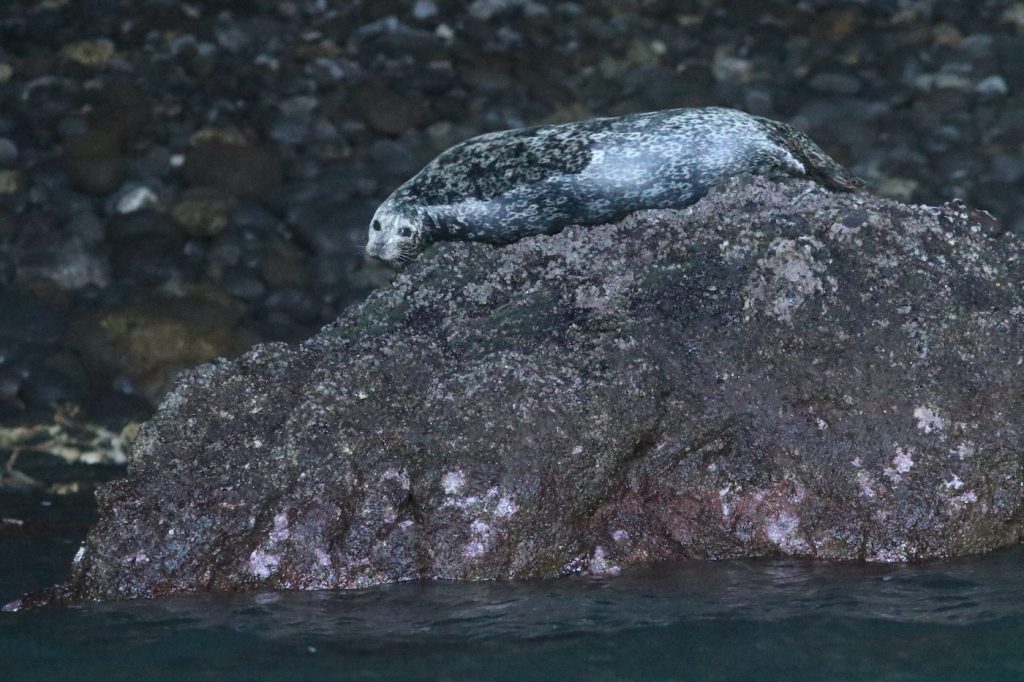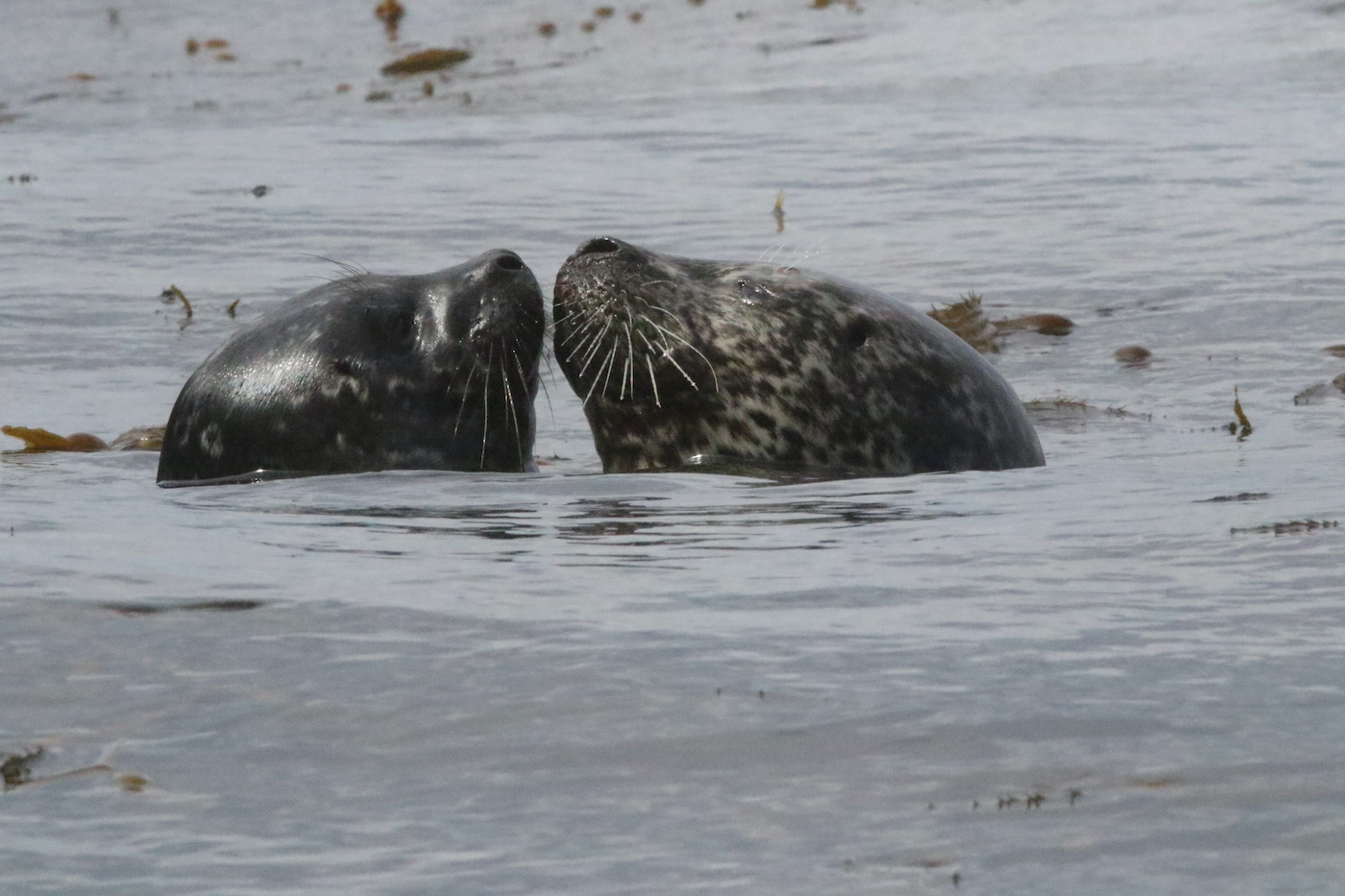Harboring Docility

In 1979, I was a young teen and very green in the ways of animal behavior. I was surfing out front of my home in Carpinteria. It was wintertime and the beach was deserted under cloudy skies. I was the only one surfing that cold, crisp overcast morning. It wasn’t long before I heard a series of yelps a little further out beyond the waves. It was a newborn harbor seal pup, and it was missing its mom, calling to her but to no avail.
While sitting on my surfboard I called out to it, and surprisingly the pup swam my way. It swam right into my lap. I didn’t know what to do, so I paddled it to the beach. It sat on my board while I carried it a short distance home. I didn’t know what to do with it, so I called the Santa Barbara Museum of Natural History and got connected with someone in the know. They told me to return the pup right where I found it. Its mother would return to look for it. Harbor seal moms leave their pups for periods of time while searching for food.
Quickly I grabbed the pup, it’s umbilical cord still attached, and raced it back to the beach. I paddled the pup back out beyond the surf and waited. Sure enough, minutes later she bobbed only 20 feet off the nose of my surfboard, mother and pup gratefully, thankfully reunited.
The Most Docile

I’ve never heard of a harbor seal ever being aggressive toward a human. They have the reputation for being the sweetest, most docile of the pinnipeds. Many times, while leading kayak tours at the Channel Islands National Park, I’ve had them swim right up to my kayak and roll on their backs for a tummy rub. Every now and then I’ll swing my leg over the side of my kayak when a harbor seal is close by. Several have used my heel as a scratch post for their muzzle, a solid substitute for when acorn barnacles are not present. One adult male used my heel for just that, scratching its muzzle on one side, leaving for a few moments only to return and scratch the other side.
Once, while kayaking through Elkhorn Slough up in Monterey Bay, the tide was extremely low and dozens of harbor seals were basking on the warm mudflats. However, a couple of pups were circling in the murky waters of the second largest tidal slough in California. One of them approached my kayak and astonishingly climbed in without any hesitation. It sat comfortably in my lap. Plump on its mother’s rich milk, it stared up at me as if it knew me. I never touched it with my hands. Eventually it grew a little anxious and flopped out of my kayak and back into the murky waters.
Close to Home
While leading a kayak trip along the southeast end of Santa Cruz Island, my group and I had just reached a massive sea grotto known as Harbor Seal Cave. For obvious reasons, harbor seals enjoy its depth and dankness – it’s cover from the elements. It’s a place for rest and warming up, associated with something called hauling out. Harbor seals are not the most adept on land and scooch up the steep cobbled beach in the back of the cave to haul out. Pupping season is February to May.
It’s also not uncommon to have harbor seals, pups, and adults follow along on a kayak tour from cave to cave. Wherever a harbor seal is seen, then that vicinity has been their home since birth. They are not big travelers like California sea lions, northern fur seals, and colossal northern elephant seals. Everything harbor seals need is close to home.
On one particularly nice, calm day, the time was right to do some sea cave spelunking. However, something caught my attention on the left side of the grotto. Before I let anyone in, I paddled inside to grab what I thought to be a plastic grocery bag. When I picked it up, I was startled to find it was placenta from one of the female harbor seals. I brought it back out of the sea cave to show everyone. Personally, I always thought harbor seals only gave birth on surrounding beaches, but come to find out, they can give birth in the ocean too. After everyone had a look, I paddled it back inside the cave. The placenta is very nutritious, so all the birds, fish, and even the harbor seals will consume it.
When I paddled back out to everyone, I noticed the mom and newborn harbor seal pup off to the right side of the cave nuzzling with each other. Mothers and pups are very tender toward one another, rubbing their muzzles together to show affection. When the pup playfully rolled on its back, I noticed its umbilical cord still attached to its football-sized body. Eventually that too would be chewed off and consumed.
Curious by Nature


Harbor seals are always good for popping up next to the kayaks. They can’t help themselves and want to see what’s going on around their aquatic biome. Mostly they’ll pop their heads up out of the water like a periscope, but once they see there are no threats, they’ll point their snouts skyward, close their big, round eyes, and soak in the sun on the surface of the water.
Sometimes they’ll rest at the surface in a thick canopy, wrapped in giant bladder kelp and sunbathe the day away, blowing bubbles through their snouts, seemingly without a care in the world.
Many days feel like that out at the islands and inside the sea caves. The easy ebb and flow of the tide a good indicator for mild conditions. Sometimes it’s calm enough for me to kick my legs out atop the bow of my kayak and nap like a harbor seal.







